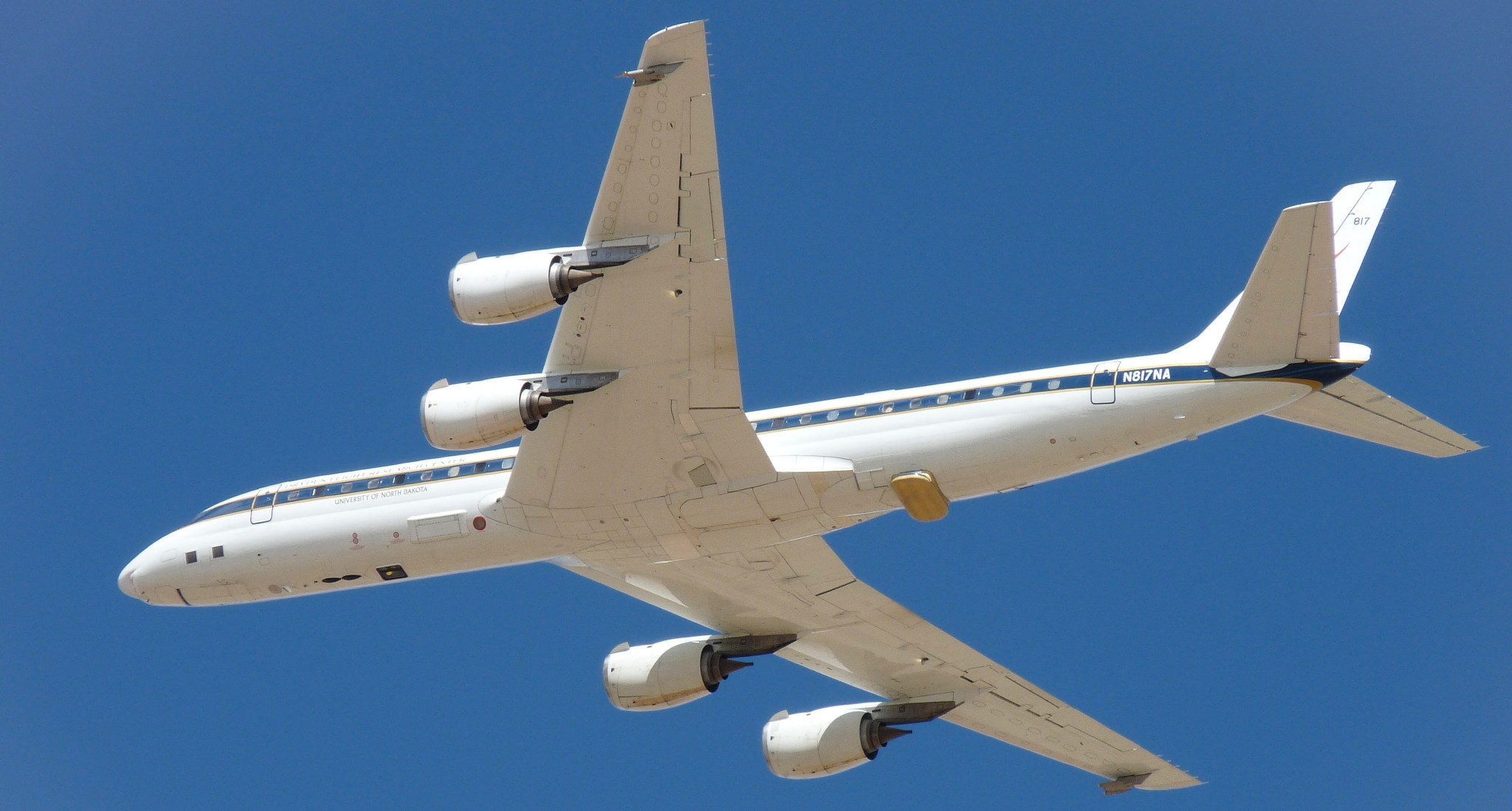It’s not a strict circumnavigation of the world, but NASA’s Atmospheric Tomography, or ATom, mission to fly down the Pacific Ocean then up the Atlantic is about as close as it gets. Beginning July 28, 2016, NASA’s flying laboratory aboard the DC-8 aircraft will journey with 42 scientists and operations crew on a 26-day journey from nearly pole to pole and back again. The first of four deployments that will take place over the next three years, they’ll be measuring a suite of more than 200 gases as well as airborne particles from the remotest parts of the atmosphere to better understand the processes that govern how various greenhouse gases cycle around the world.
Credits: NASA
“The flight path is one of the most exhilarating things that a person will get to experience,” said Steven Wofsy, a professor of atmospheric sciences at Harvard University and ATom’s project scientist. “You really get this sense of the atmosphere as a commons of the world because you’re flying over the polar ice cap and then two days later you’re in Hawaii and you’re flying into the deep tropics with all of the amazing weather phenomena that occur there, and it’s all one atmosphere.”
After taking off from NASA’s Armstrong Flight Research Center in Palmdale, California, the circuit will first fly down to the equator and back from Palmdale. A few days later, they’ll travel towards the North Pole, then down to Anchorage, Alaska for the second leg of the journey. Next it’s off to the tropics by way of Kona, Hawaii, and American Samoa in the South Pacific, before continuing on toward the southern polar regions. Christchurch, New Zealand, is the point farthest south in the Pacific basin, before the mission heads east across the vast Southern Ocean to the southern part of South America at Punta Arenas, Chile.
Then it’s time to head back north up the center of the Atlantic. Ascension Island near the equator between Africa and South America, is the tropical stopover, then Terceira Island in the Azores, off the coast of Portugal. From there, the team flies back into the Arctic, landing in Kangerlussuaq, Greenland for the last stop before crossing Canada and the States back to Palmdale.
During each leg of the trip the aircraft will make five to twelve gentle descents to 500 feet (152 meters) above the ocean’s surface and then ascents back to 35,000 feet (10,670 meters), in order to sample air at a wide range of altitudes. By the end of this series of flights, the science team will have made 160 vertical profiles of the atmosphere, and the aircraft will have traveled about 41,000 miles (66,000 kilometers), the equivalent to flying around the Earth 1.6 times.
Making the arrangements has been one of the biggest challenges of planning the mission, said Erin Czech, ATom’s deputy project manager with the Earth Science Project Office at NASA’s Ames Research Center in California’s Silicon Valley. He and his colleagues have been working behind the scenes since April 2015 to ensure that each site is ready to receive the plane and its crew.
“You really have to think about it from the perspective of what’s required from when the plane hits the ground to when the plane leaves,” he said. In addition to ensuring various permissions, support contracts and jet fuel are in place for the DC-8 aircraft’s arrival, his team also handles the mundane tasks. “We need to find people places to stay, make sure they have cars to drive around,” he said.
Each stopover is scheduled to last for about two days to give the pilots time to rest and to give the mission team a time to analyze data and cushion against problems that may crop up.
That’s the part that makes both Czech and the science team nervous. Weather, unexpected issues with the instruments or the aircraft, or other unanticipated events—any of these can cause a delay, and a shift in the schedule has a domino effect that means adjusting all the arrangements down the line.
From the selection of the DC-8—the reliable workhorse of the NASA fleet—to the selection of proven instruments to make measurements of various atmospheric gases, the science team is confident that any technical issues that arise will be minimal.
“But it’s a long trip and the instrumentation is very sophisticated, and it’s getting hot and cold and hot and cold, and wet and dry and wet and dry, and you’re landing in places where you may not have a hangar, and there’s all kinds of things that can cause a delay,” said Wofsy. “Pulling it off will require a team of great dedication and experience, which we have, and also a bit of luck.”
For more information about ATom, visit:
























